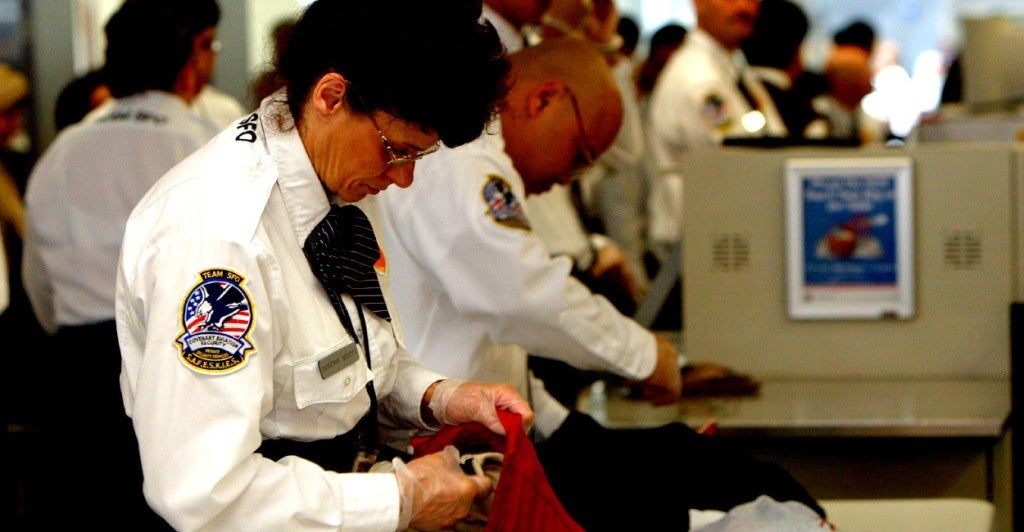Science tells us that water behaves very predictably: It follows the path of least resistance. Not surprisingly so do terrorist groups, and the Paris and Brussels attacks followed this trend.
In both cases jihadists struck at lightly defended targets and, in the case of the Brussels airport, at a lightly defended portion of the airport, namely away from the highly patrolled passenger and baggage screening areas.
Naturally the Brussels airport bombing has led to calls for increased security at U.S. airports. This has taken the usual form of efforts to increase funding to the Department of Homeland Security’s Transportation Security Administration (TSA) for programs such as explosive detecting canine teams and increased vetting of airport workers.
Do these proposals represent “commonsense” measures? Sure, especially when “commonsense” is the most malleable term of art ever used in Washington.
I would argue that the Brussels airport attack teaches us something different. I believe that the main lesson from the Brussels airport attack is that it is time to shake up the status quo at the TSA—let’s get it out of the passenger screening business.
What I am proposing is not a radical idea. In fact, it is one that Congress has had in mind since it created the TSA back in 2001.
Specifically, Congress required the TSA to give any of the 450-plus airports where it provides passenger screening the ability to “opt out” of using federal screeners. Under this “Screening Partnership Program” or “SPP,” Congress authorized a carefully managed mechanism by which highly qualified private security guards could assume the role of TSA checkpoint screeners.
Despite repeated assertions by its detractors, the Screening Partnership Program is no loophole that allows bottom-dollar contractors to swoop in and steal jobs from hardworking federal employees. Instead, the SPP is a TSA managed security program that sets strict benchmarks for determining whether a private security guard company can be deployed at an airport that requests their use.
To ensure that “opt out” screeners provide high quality service to the traveling public, the TSA:
- Currently selects and oversees the deployment of the private contracts (though rather than having the TSA select a contractor for each airport, it would be far more efficient to let airports choose from a list of TSA approved vendors);
- Ensures that screeners will at a minimum have met the same employment screening, proficiency and training requirements of federal screeners;
- Requires that private screeners are provided compensation and benefits at a level no less than federal screeners; and
- Requires that the level of screening services and protection provided by the SPP vendor must be equal to or greater than the level that would be provided at the airport by federal screeners.
Now, let’s add in these interesting wrinkles: Studies have shown that Screening Partnership Program vendors provide more effective screening services than TSA screeners and at a lower cost. In other words, the private sector does the same work better and more cheaply.
Shocking.
Why is that? Well as Stephen Amitay, executive director and general counsel of the National Association of Security Companies, pointed out in testimony before the House Homeland Security Committee, SPP vendors are demonstrably better at managing their workforce.
They use innovative scheduling tools and software to more efficiently assign screeners throughout an airport. SPP vendors also have a materially lower screener turnover rate than the TSA, and also have the ability to more quickly discipline or even fire employees should situations dictate that outcome.
Put that together with a Congressional report noting that the TSA would realize $1 billion in budgetary savings over five years if just the top 35 U.S. airports switched to SPP vendors, the case for replacing 50,000 TSA screeners becomes even more obvious.
I note the above not to pick on TSA screeners—they play an admirable role in securing passenger aviation. Instead, my point is that by fully utilizing the SPP system, the TSA will free up massive human capital and fiscal resources that can be used to protect other airport areas.
One billion dollars is a lot of money, even for the federal government. Imagine if the TSA went ahead and allowed those cost savings to be realized? That money could easily pay for increased numbers of Visible Intermodal Protection and Response (VIPR), canine teams, improved background checks on airport workers, or even higher subsidies of local law enforcement personnel and technology deployments at all airport areas.
Keep in mind too that there is a lot of room for savings here—less than 10 percent of eligible U.S. airports use SPP vendors. So $1 billion in savings is just the tip of the revenue iceberg.
The stark reality here is that by smartly using the Screening Partnership Program, the TSA can do more without paying more, much less sacrificing quality. Given the increased terrorist threat environment and continued federal funding challenges, the TSA owes it to the traveling public to go down this road.
